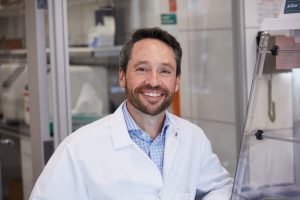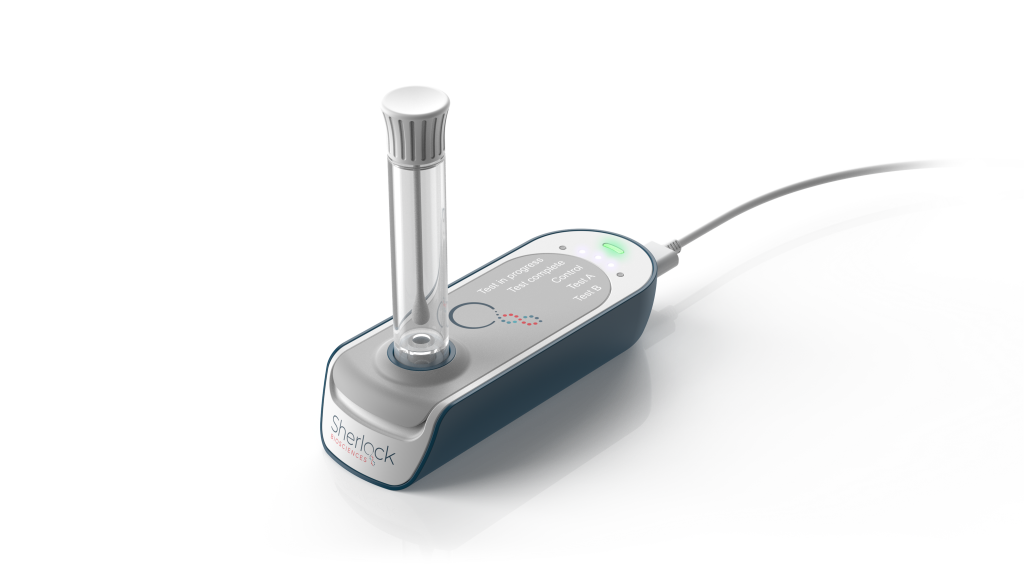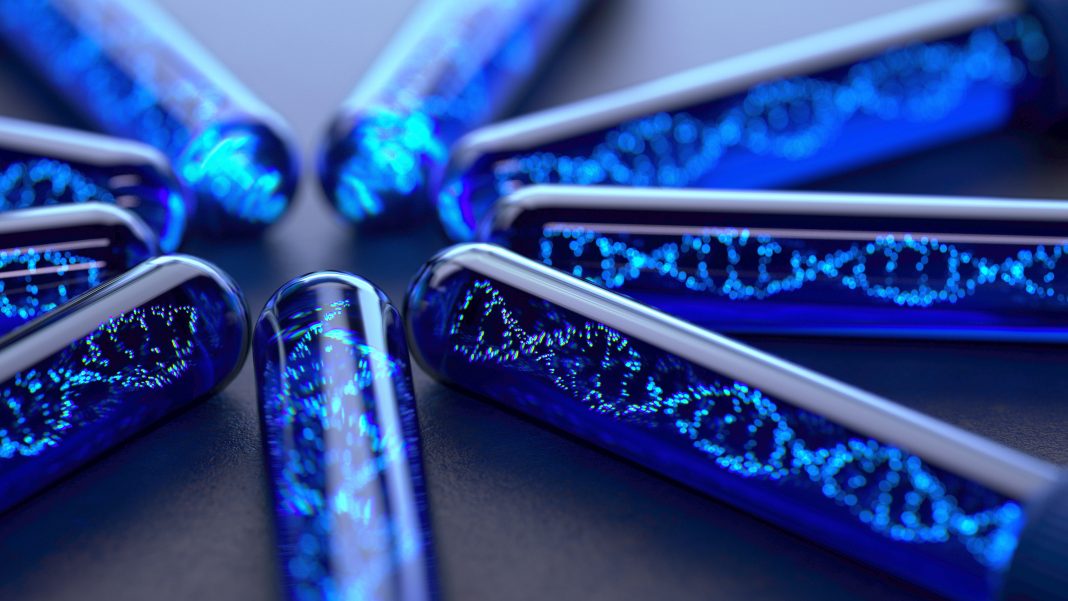
Over the past few years, the race to establish CRISPR diagnostics supremacy has been a duel between two lead horses with strong pedigrees: Jim Collins and David Walt’s Sherlock Biosciences (including Todd Golub, Pardis Sabeti, and Feng Zhang among the co-founders) and Jennifer Doudna and Janice Chen’s Mammoth Biosciences. Mammoth was launched in 2018 behind the vision for a CRISPR-enabled platform capable of detecting any biomarker or disease containing DNA or RNA. Sherlock followed suit, launching in March 2019 to provide better, faster, and more affordable diagnostic testing worldwide.
While the contest to regulatory approval was already one of the hottest derbies, featuring an east- and west-coast head-to-head, COVID-19 fired a starting shot that led to the first Emergency Use Authorization (EUA) from the FDA for a CRISPR diagnostic, with Sherlock galloping ahead to cross the finish line first.
Mammoth hasn’t totally pulled its horse in CRISPR diagnostics, evidenced by the contracts to develop CRISPR-based diagnostics and biosurveillance technologies for the U.S. Department of Defense (DoD) and the EUA for their high-throughput CRISPR-based DETECTR BOOST® SARS-CoV-2 Reagent Kit. However, the Brisbane, CA-based Mammoth has made several recent announcements on strengthening their nuclease portfolio and collaborating to develop CRISPR therapeutics.
Since the initial EUA, Sherlock has thrown its entire weight behind the development of novel diagnostic products. In June 2021, Sherlock announced partnerships to increase its COVID-19 diagnostic manufacturing capacity by up to 10 million tests per month by year-end. A month later, Sherlock handed Bryan Dechairo the reins as the new President and CEO to decentralize and democratize advanced molecular diagnostics, which was backed an $80 million series B financing round in March 2022.
One year into his stint at the helm of the company, Dechairo sat down with GEN Edge at BIO 2022 in San Diego to discuss how Sherlock is strategically building a portfolio of diagnostics for use in the home and in low resource settings.
GEN Edge: Where are you steering Sherlock to develop revenue streams?
Dechairo: I joined the company about a year ago to scale it from a research company into a development and commercialization stage company. Sherlock has long recognized the value of CRISPR for diagnostics. Before our Series B, we were mainly a phenomenal research shop with top-tier scientists advancing CRISPR and our synthetic biology platform. We were chopping off hours for testing and getting to higher sensitivity, whereas now we’re down to two copies per reaction, which is amazing sensitivity with high specificity. Raising so much in our Series B helped us advance the science so much that we are building out the development and the commercial organization.
Sherlock’s COVID CRISPR test was the first-ever authorized CRISPR use by the regulatory agency. That test, I always say, did not meet a consumer or customer need because it was about a two-and-a-half-hour test, whereas PCR took about an hour. But over the past year, we’ve been able to take this multi-step process and do it all now in a single step in real-time with new Cas enzymes that we’ve engineered. We can now do that same process in 10 minutes! COVID showed us that the world is ready for home and decentralized testing.
Over time, we’ve realized that the true value of our technology is speed—we can get results in under 10 minutes. It can be done under an hour when paired with our proprietary ambient temperature amplification method that works at room temperature without needing electricity or power. That allows us to have diagnostics with PCR accuracy for DNA or RNA in an entirely disposable power-free format without circuits for, let’s say, a pregnancy test. This enables us to democratize and decentralize diagnostics by bringing the diagnostic tests out of the doctor’s offices and labs, and bringing them into patients’ houses, agricultural fields, and livestock businesses. We can get them to people in tents in Sub-Saharan Africa and low-income countries to diagnose people and then quickly give them antibiotics or treatments that will change the trajectory of health across the globe.
GEN Edge: How does Sherlock choose to target specific indications?
Dechairo: Less than a year ago, we did this huge market research study with thousands of US consumers. We asked people—pregnant women, parents, caregivers, and more—questions about over 100 different conditions that are DNA- or RNA-based. One question was: “Which of these would you want to be tested for at the doctor’s office, and which would you want to do at home?”
Privacy, urgency, and anxiety drive many to want to test at home. You need an answer immediately and may not want anybody else to know so you can decide whether to go into the healthcare system. Out of those hundreds of conditions, we narrowed it down to about 13 conditions. About one-third of them were respiratory, which makes sense with COVID. One-third were in STIs, which makes sense from the desire for privacy and the personal perspective. And another one-third were in unexpected disease areas that most people would not think about making a diagnostic or that a doctor would never even think about ordering a diagnostic for. Right now, we’re focusing on STIs and respiratory conditions.
We realized that we have these incredible technologies that can be done at room temperature at a very low cost with high accuracy. But you can’t just give chemistry to people and expect people to pipette liquids. You have to put this chemistry onto an effortless device for users. We are now building two different devices for what I would call the decentralized market, whether in a low-resource setting—like Sub-Saharan Africa or in the rainforest—or in patients’ homes. People don’t have equipment and labs in their homes and are not trained to use complex lab equipment.
One of our devices is a base with a reusable cartridge for different types of samples because sample prep is a huge challenge. Some companies created devices specifically for COVID, but those devices are not flexible to do a host of DNA or RNA tests, which is what we want our base to be able to do. The base should be able to have a whole host of different cartridges and samples that are interchangeable. We’re building more of a razor/razor-blade model, so durable that you can have multiple conditions you might want as a parent for your family or at home for yourself.
Then we have this very low-cost disposable that works at room temperature. It’s paper wrapped in plastic. It takes the same sample prep containers. But now it’s heat-free sample prep—pure chemical lysis. It’s fully disposable like a pregnancy test and can be portable anywhere. There are some conditions where people want to test repeatedly. And that’s why we have that one platform, which we call power light. There are other times when you have a situation in your life where you just want a quick answer, whether you have something or not. You want this quick test so you can just get an answer, throw it away, and then decide what to do.

GEN Edge: What are the key milestones that Sherlock needs to hit?
Dechairo: We have to make the assays, devices, and sample prep. All of those have to come together at the right time. We have four conditions that already have validated assays that are working with sample prep and working very well. We have four more in the phases where we’ve designed all those assays, and they’re being validated in the lab with the sample prep we need for them. Sample prep flexibility is the most important thing in this decentralized business, which is the hard part along with rate-limiting.
We are moving into alpha testing on our devices this year, and we will also be in beta testing early next year on our powered base. At the alpha phase, all of them have to be integrated and put onto the device for the first time. We’ve been partnering with some of the largest manufacturers of devices globally. We’ve already signed agreements to build those devices, and, with supply chain and other issues, we wanted to make sure we can manufacture at scale. We saw some companies during COVID who came out with great technology and couldn’t meet the market demand because they weren’t partnering with the manufacturer who could then produce millions of tests to meet demand. We’re ensuring that we learn from others and not make mistakes.
GEN Edge: What stands in the way of Sherlock’s trajectory?
Dechairo: We always need to go faster! Bringing the two devices I mentioned to the consumer is the rate-limiting step. Big companies have taken 4-7 years to bring devices from an idea into FDA approval or clearance. We’re cutting that by at least 50% with the speed we’re going. The rate-limiting step is how quickly you can combine your devices with your chemistries, validate them, and get them into a clinical trial. There’s a great regulatory path forward for it.
Once the devices are cleared, the pipeline of conditions we can test for rapidly becomes very large. But then the next question is: how do you suddenly open up the funnel and have this massive pipeline of many different conditions that can follow forward in all the partnerships that could go on there? Again, we can do almost any type of DNA or RNA testing like quantifying human polymorphism and fungal, viral, and bacterial infectious diseases. But it’s not just a human health market.
If you build it, they will come. If you get those devices with one approved condition and people realize that it’s easy, flexible and it’s real, then they understand that it can happen. Suddenly, everybody wants to be on that because you’ve shown a path forward.
What’s stopping us from doing cancer detection? The most challenging hurdle is getting a sample of blood. Other collection methods include those using fecal samples that are easily collected on the fecal swab. Some are on your skin and easily collected by a swab in your skin. So, you start with some of the easier sample collections. Then you start working your way into the harder ones. And we don’t focus on the hardest one first. We’re taking some things forward that we know are in high demand and we can win in, but then we’re also focusing on some of the most challenging conditions today. If we fail, we’ll learn so much that we still open up a ton on the menu. If we succeed in oncology and many different markets, the platform will grow over the next few years.
We’re opening up this menu of what’s going on in your urine, blood, and tears. Either someone can swab you, or you can collect your saliva. There are a lot of questions that can be answered with your DNA that you may want to be done at home.
GEN Edge: How does Sherlock use partnerships?
Dechairo: Because our chemistries are novel and so easy to use, we can put them onto a lot of equipment. Our chemistries can go onto point-of-care and point-of-need devices and speed up results. When we’ve had these conversations with several different device companies, like some of the big players in the field, we thought that they would want our chemistries on their devices. But they feel like their devices are no longer necessarily meeting that demand and would rather have our devices with our chemistries on them in a more decentralized point-of-care space. Many conversations are around getting devices into beta testing, which will happen in less than a year. We can partner on various programs, carving out different spots around the globe and in different markets.
GEN Edge: Is Sherlock working on an API or OS to facilitate patient interactions with the testing devices?
Dechairo: We are creating a mobile app that allows us to help make sure that you can definitively read the result. We have both lateral flow results, which people are used to, and colorimetric readouts. A phone app does a great job verifying results by just holding your camera and seeing it. It also allows you to send a PDF to your physician and upload it into your medical records to enable that connectivity. But we don’t want to add that connectivity into the actual devices we’re creating because that adds costs. A whole part of the world would rather just have a result and an action. They may not need that connectivity, not need the cost of that connectivity or not have the cell phone to enable that connectivity.
Many people who think they’re pregnant get a pregnancy test. Yet, most people go to the OB-GYN or go to the hospital to give birth without needing an app or any connectivity to their medical record to have a child. With STIs, some people simply want the results to know if they even need to seek treatment. A lot of people are embarrassed about seeking help. If you look at the data, the more people have a diagnosis, the more people will seek treatment. Looking at the population level, we further public health by testing more individuals.
For example, we were just talking to a group focused on low- and middle-income countries around tuberculosis. They’re saying that only 25% of the market gets tested with a certain level of accuracy without many false positives and negatives. What if you open that up to 75% of the market with a lower sensitivity and specificity device? The result is that far more people will test positive and get treatment. You have to do it under a risk-based scenario, but the more we empower people to know what’s going on with their health, the more we will improve population health.

